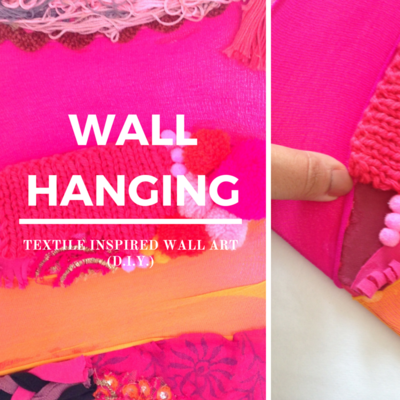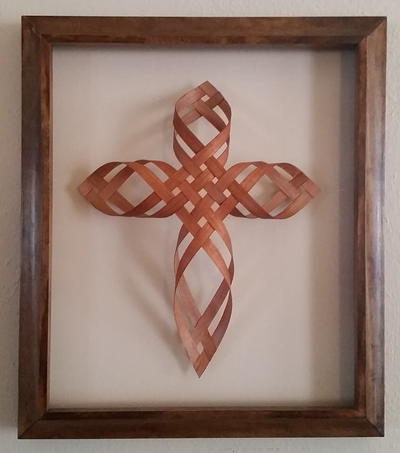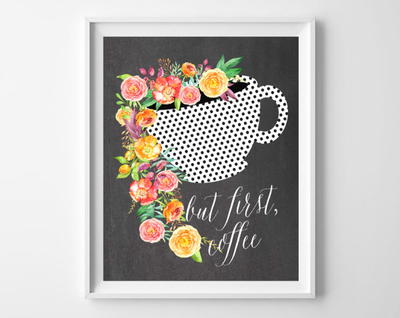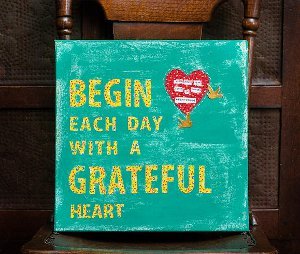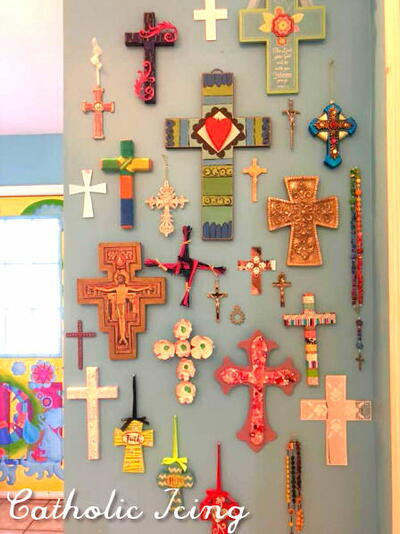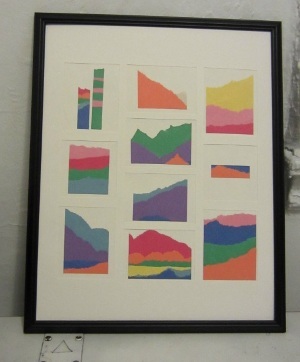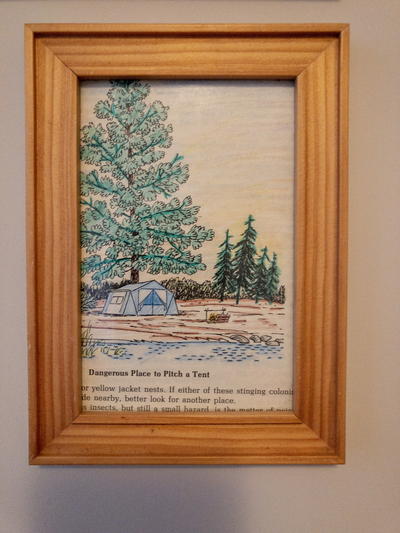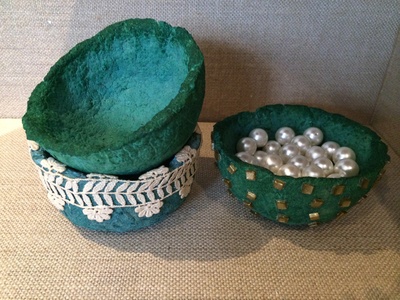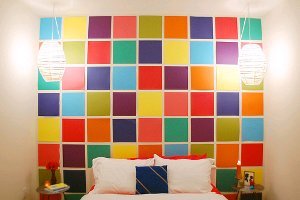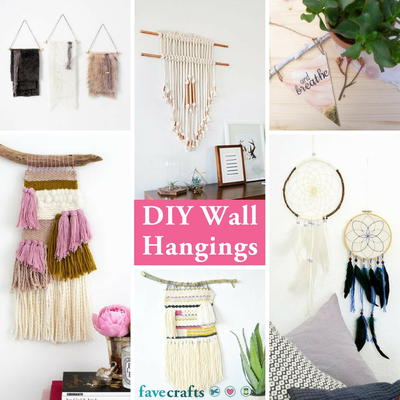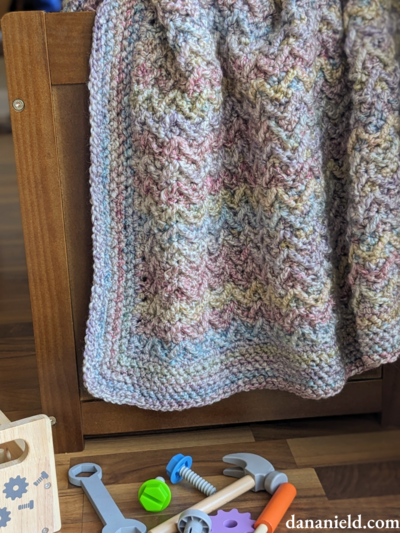Textile Inspired DIY Wall Hanging
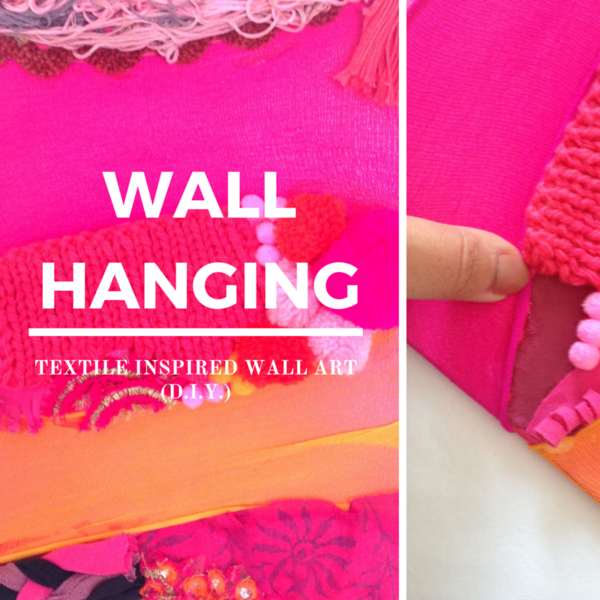
"A set of wall hangings embodying bright pops of color and my love for textiles. Easy, quick and customizable!"
Primary TechniqueFabric Crafts

SeasonSummer
Materials List
- Flat canvas board- 8? x 10?
- Acrylic paint- 2 bottles
- Foam brush- 1 piece
- Old paint brush- 1 piece (to take paint out of the bottle)
- Fevicol/ Mod Podge- 1 tube
- Glue dots/ Hot glue gun- 1 pack
- Stocking cloth- 1 pack pink + 1 pack orange (often used for flower making)
- Pom-poms- various sizes
- Anchor thread/ embroidery thread
- Wool yarn for knitted patch
- Ric-rac ribbon
- Printed fabric
- Embroidered fabric scraps
- Three colour braids of knit fabric
You could customize the elements and colour palette according to materials available. I went with a pink and orange palette, adding shades of purple to it. Following is a pictorial step-by-step guide to arranging and adding elements. I have linked to individual elements tutorial where needed. I made two wall hangings in this set.
Instructions
-
Paint one layer of acrylic paint. I was using foam brushes for the first time and loved the results and ease of application. I would recommend it to everyone painting broad flat surfaces. Make sure to paint the edges of the canvas board too. Let the first coat dry for about 15 minutes.
-
Paint the second layer of acrylic paint. I used pearl finish paints for a slight shiny second layer. Let the second coat dry for about 15 minutes before the next step. This is how the canvas board looks after the two coats of paint (right picture). The canvas is painted for two reasons- so that there is no whiteness below the stocking and the smaller blank areas between elements do not stand out in white.
-
Arrange all the elements on the board. Play around with the placements till its balanced in your eyes. If required get a second opinion.
-
Start sticking down elements. Let the stocking fabric remain in place without pasting it. Next paste the flattest element like printed fabric and to for a tactile feature add pinched pleats while pasting. I used Fevicol for pasting the fabric. Make sure to spread the Fevicol thin because thicker Fevicol layer leaves prominent marks even after drying.
-
Depending on your elements, work in sections. Next I glued the knit fabric braid ends to secure the braiding. I used glue dots for this 3d element. Fevicol would not be strong enough to hold it. Glue dots were also used to secure the braid on the canvas board. Apply the dots with spaced out but enough for a strong grip. Press in place.
-
The next element in the lower section were the embroidered scrap pieces. I applied Fevicol over the board area and pasted the pieces in place. For overlapping embroidered pieces you might need to apply Fevicol at the overlaps. While pasting elements start with the bigger elements and end with easily manipulative smaller elements. This way you wont have too much blank space on the canvas.
-
Next I started work on the middle section. Use white glue (Fevicol) for the flat elements like textured paper and frayed knitted fabric.
-
Knit a 4inch x 4inch swatch. I have linked a tutorial for a basic knitting in the elements section. I used the same swatch for both canvases. Even though the knitted fabric was a thicker element I used Fevicol because the glue dots would show between the loose knit stitches.
-
Next I pasted the pom-pom arrangement in place. Use glue dots or hot-glue gun for the circular pom-poms. Once you have glued the knitted swatch and pom-poms tilt the canvas straight , as it would hang on the wall, to check for any loose elements.
-
Secure the stocking fabric in place with white glue once the lower and middle section are done. Make sure the Fevicol layer is thin.
Read NextMosaic Wall

